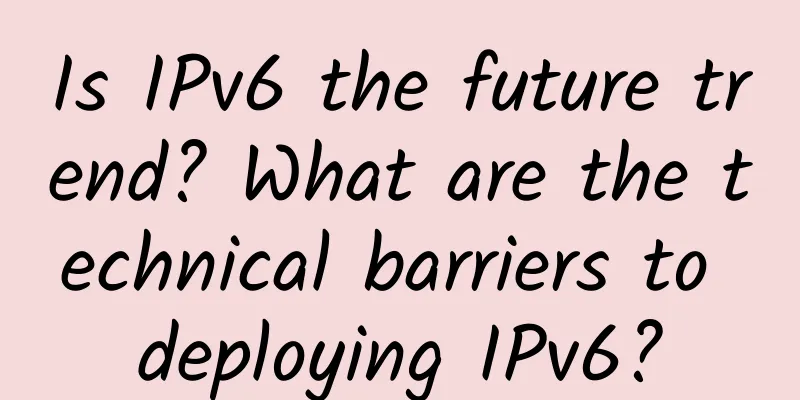Is IPv6 the future trend? What are the technical barriers to deploying IPv6?

|
Nobody's using IPv6? I'm sure there are many people who have heard something similar in conversations, and while it can be difficult to convince these people that more and more organizations are deploying IPv6, especially when the adoption rate has been so slow in the 20 years of existence so far, these instances at least give me a chance to get them thinking about the topic again and share the great work that's been done recently in this space.
It’s encouraging to see that this work, and for all of us IPv6 fans, seems to be paying off, at least for our IPv6 conferences, where we’ve seen an increase in attendee numbers over the past few years. Here are some of the insights I’ve been giving at these conferences lately, and my tips for getting started with IPv6. No shortcuts for IPv6 Many people in our conference are eager to deploy IPv6 but are struggling with the "everything is bigger" mentality. Ideally, they are looking for ways to make IPv6 easier to incorporate into current networks. Unfortunately, there is no shortcut, or one-size-fits-all process to deploying IPv6, it takes time, effort, and upgrades. All of which inevitably require some capital expenditures, which leads many to the second barrier to deploying IPv6: management does not see the additional benefits of deploying IPv6. What is the business case for IPv6? In the eyes of management, IPv6 is an expensive upgrade to an un-cracked technology/protocol. Therefore, a standard question from audience members is “How do I make a business case to management?”. Again, all the business cases we could provide were none. For example, if security is important in your organization, discuss with them how running a dual stack provides better visibility and fewer false positives than using Network Address Translation (NAT). If it's a question of money, explain to management the costs associated with continually upgrading NAT. If it's a question about sustainable network expansion, explain the issue of IPv4 exhaustion and the use of NAT (again) and/or acquiring and consolidating addresses from the transfer market. Learn IPv6 basics now? The following steps are a good start: It's not difficult, but some of the techniques you learned in the past, such as subnetting, you will have to unlearn. Investigate whether all devices and applications in the network are capable of running dual stack? If you recently refreshed your network, this shouldn't be a problem. Start asking your providers and application developers if they support IPv6, and you can be assured that it will help with the transition. |
>>: Simple analysis of the three important requirements for remote network connections
Recommend
Contabo: $6.99/month KVM-8GB/200G SSD/200M unlimited traffic/Germany, the United States, and Singapore data centers
Contabo is a long-established German hosting comp...
5G is here, how far is 6G?
"In the 6G era, hundreds of high-definition ...
ICANN to replace Internet Domain Name System (DNS) encryption keys for first time
Recently, David Conrad, Chief Technology Officer ...
The TRUST principle for 6G network performance experience
The International Seminar on Future Information a...
Can't catch the three-way handshake process? Then come and catch a packet with me!
Some time ago, I was busy with a robot communicat...
How to choose a managed data center service provider?
When an enterprise chooses a managed data center ...
Why choose NB-IoT when there are so many standards?
The need for communication is indispensable in ou...
Can 5G messaging become a moat for operators in the digital economy era?
The completion of the project of "5G Message...
Looking at 5G from a different perspective: Don’t talk about technology, talk about demand
[[280015]] 4G changes life, 5G changes society. W...
Do I need to turn off data traffic after connecting my phone to WiFi? The operator gave the "answer"
Nowadays, everyone has a smartphone. As long as i...
H3C ranks first! Its market share of Chinese enterprise network switches exceeds 30% in the first three quarters of 2022
Recently, IDC released the "China Ethernet S...
IEEE technical white paper officially released, lossless network research enters a new stage
Recently, the "IEEE 802 Nendica Report: The ...
The seven-layer network model and TCP/UDP that you will forget after reading it once, let me popularize it for you again
In order to enable different computer manufacture...
Friendhosting offers 25% off on all sites, VPS in 11 data centers starting from 12 euros for half a year
Friendhosting has launched a SysAdmin Day Sale pr...
Build telecom-grade WiFi and lay out the entrance to the wireless city?
As early as 2013, the WiFi networks of the three ...









